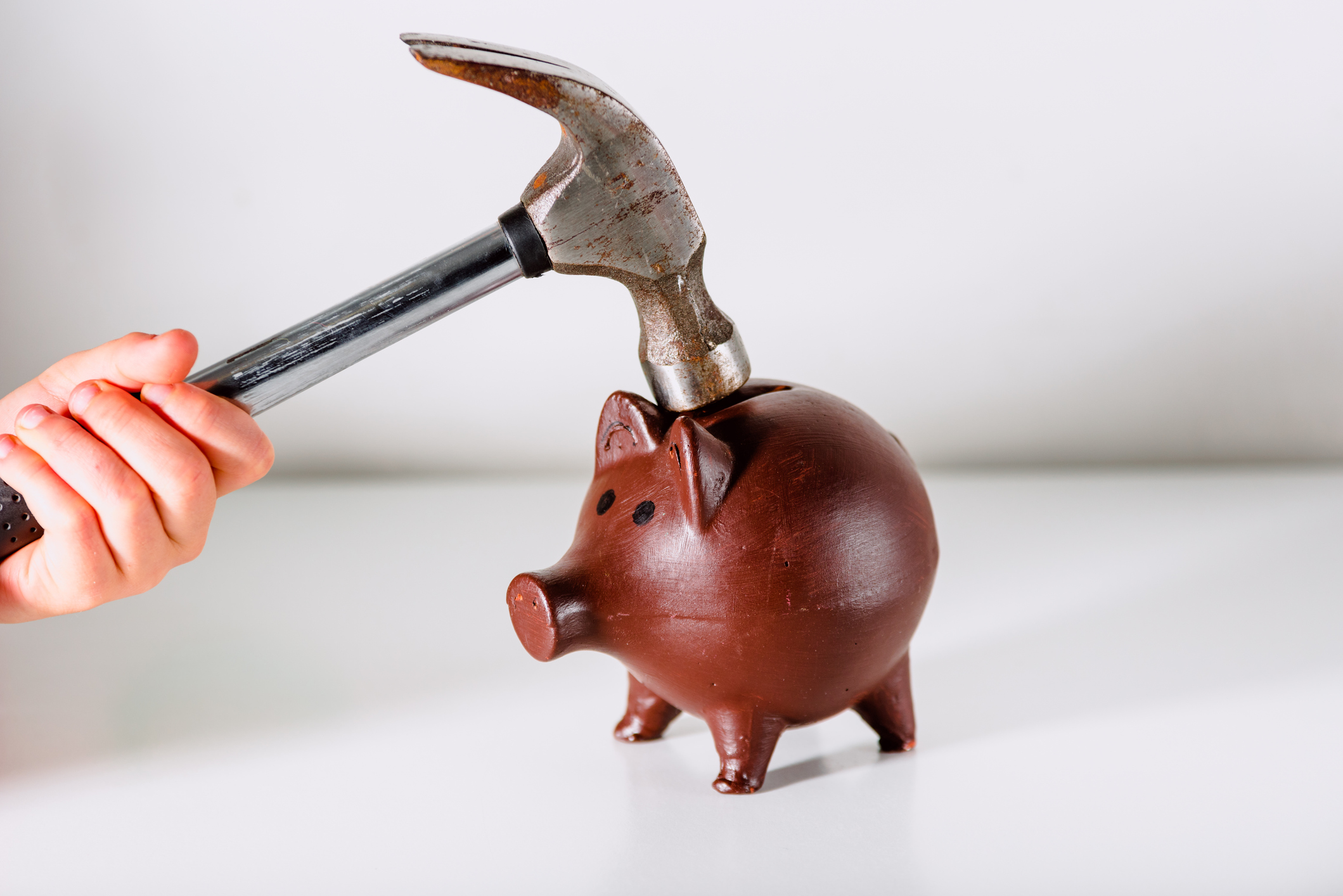What's more likely - stagflation or depression?
Are we about to see a return to the 1970s? The US is at war, oil prices are soaring, the Federal Reserve is hiking rates – it’s no surprise many analysts are experiencing déjà vu. But as Mike Shedlock points out, there are also some huge differences between now and then. We could be looking at a repeat of a much more worrying period of history....
Is this a re-run of the '70s and '80s? Most seem to think so, as the word on everyone's mind is 'stagflation." In "Flationed Out," I dismissed stagflation from an Austrian perspective, but let's look at things from a then versus now perspective to see what the similarities and differences are.
This is a practical exercise, as opposed to a monetary exercise.
The return of stagflation? Similarities with the 70s
1. War in Vietnam then vs. war in Iraq now.
MoneyWeek
Subscribe to MoneyWeek today and get your first six magazine issues absolutely FREE

Sign up to Money Morning
Don't miss the latest investment and personal finances news, market analysis, plus money-saving tips with our free twice-daily newsletter
Don't miss the latest investment and personal finances news, market analysis, plus money-saving tips with our free twice-daily newsletter
2. Rising oil and commodity prices.
3. Fed trying to crush inflation.
4. Rising interest rates.
5. Oil shock.
6. Social mood.
Jim Puplava made a case for similarities in Historical Rhythms, and perhaps you can find some items to add to that list.
The return of stagflation? Differences from the 70s
1. Spiraling wages then vs. declining wages now.
2. Wage and price controls.
3. Debt levels.
4. Housing down payments.
5. Two family incomes.
6. The power of unions.
7. Pricing power of manufacturers.
8. Globalization.
9. Outsourcing.
10. Productivity.
11. The Internet
12. Wealth concentration.
13. Fighting the last war.
14. Oil shock.
15. Declining credit standards.
16. Downfall of communism.
Rising commodity prices and a 'guns and butter economy' are, of course, the most common parallels. Unfortunately, most seem to stop right there and say, 'Yes, this is a rerun' without even bothering to look for differences. The differences noted above are staggering.
Are there any threats of 'wage controls'? How many times did John Snow tell us that rising wages were just around the corner? Flashback: My first job out of college was as a computer programmer for Chicago Title, followed by another job at Harris Bank. 10% raises back then were common. Tack on another 6% for promotions. Seriously, when was the last time 'common folk' got a 16% raise?
In the '70s, it took a single wage earner to support the family. If that person lost his or her job, the other could get a temporary job and hope to make up some of the difference. Now both partners work, and if EITHER of them has a problem, there are enormous implications.
In the '70s, you had to put 20% down on a house and prove where you got that down payment. Now you can put down a negative 15% (borrowing the down payment and then more to furnish the place) with few problems.
Unions in the '70s had enormous power compared with today. Defined benefit plans were the standard then. GM, Ford, IBM, Caterpillar, and others are doing everything in their power now to scrap them.
Was there an internet in the '70s? How about global wage arbitrage? How about outsourcing manufacturing? How about outsourcing R&D? How about shipping X-rays over the internet to India for diagnosis for treatment to take place in the U.S.?
What about productivity? China is now actually losing manufacturing jobs because of increased productivity.
Yes, we had an oil shock in the '70s. That oil shock was caused by an embargo. The oil shock now is caused by Peak Oil. Is there a difference? Yes, there is: In the former, wages rose to meet rising costs. Are wages rising now because of Peak Oil? I think not. That is why I have 'oil shock' in both columns above.
The downfall of communism is an interesting item. We pressured Russia and China and other places to 'do as we do' and support the freedom of capitalism. How odd is it that we are fighting more with China than ever before since they have embarked on free market policies? Yes, we get cheap goods, but the result is we lose jobs. No longer can the U.S. get the best of both worlds, and we simply do not like that fact. Like it or not, outsourcing has NOT come to its logical conclusion. That means pressures on wages we did not see in the '70s will remain in play for quite some time.
The return of stagflation? The gold standard
Quite simply, I do not know how to categorize this one. Yet I feel it is extremely important. Of course, I am talking about the gold standard.
It was not the gold standard that was removed by Nixon; rather, it was the "gold exchange standard." Only foreign central banks were allowed to demand gold for their dollars. In exchange, they all agreed to keep dollars as their main reserve asset, and agreed to the IMF rule that forbade IMF member nations to introduce a gold standard. This leads us to an important difference for U.S. citizens. In the first half of the '70s, owning gold was illegal for private citizens of the U.S. (one of the worst scandals that remained as a legacy of FDR, aside from the welfare/warfare state).
The "closing of the 'gold window" was a major factor in destroying the dollar's credibility in the period. Thus, dollar-based prices (and eventually prices in all other fiat currencies) began a sharp rise, so oil was subject to a double-whammy, if you will. As of now, private citizens can at least guard against the coming debacle by owning gold outright.
The return of stagflation? Inflation targeting
B.C. on Silicon Investor had these thoughts as well as a question that I want to share:
"The trouble with targeting inflation or price levels with interest rates is that interest rates shift both aggregate demand and aggregate supply in the same direction simultaneously. Lower interest rates stimulate demand by increasing debt-based consumption, but they also stimulate supply by encouraging investment. Higher rates stifle demand, but also supply by cutting back on investment in factories and equipment.
"Perhaps this is obvious, but for some reason, I never see it stated. If one wants to control prices, one needs a lever that shifts one or the other, not both. The real problem with this present system is in guessing which factor of price is going to dominate. I guess you could tie it into Kondratieff here (Editor's note: for more on Kondratieff wave theory, click here: Kondratieff wave theory). In the first three K-seasons, debt is low enough that the demand-side pull on pricing dominates. Lower rates result in higher prices, and higher rates in lower prices. However, when debt levels become unsustainably high and K-winter takes over, demand becomes relatively inelastic and unresponsive to shifts in interest rates. However, supply still responds via increased investment when rates are lowered. So, lower interest rates no longer support higher prices in K-winter. In fact, they make prices decline by boosting supply in the face of inelastic aggregate demand.
"Why am I so alone in seeing this? Shouldn't the Ph.D.s spending their days pondering this stuff have come to this conclusion long ago?
"B.C."
The return of stagflation? Why the Fed is fighting the wrong battle
B.C., that was a very good point, but all you are really doing is stating in a roundabout way that the Fed is forever chasing its own tail. The Fed can NEVER reach the natural interest rate, as its rate manipulation itself constantly shifts this natural level. The lagging effect of their actions ensures they will miss the obvious.
You are not the first with this idea. However, what is new is the attempt to tie this into the K-cycle. As much as I am in favor of those cycles, the evidence suggests that K-cycles are NOT "natural events," but rather very long-term cycles created by interventionism of the Fed and governments. In short, inflationist policies work until they blow sky-high. That time is here, which, of course, means that everyone playing That '70s Show reruns is going to instead see a rerun of the '23 skidoo small change' scenario.
Please remember the Fed always fights to the death the last major battle. The battle they should be fighting is the one before the last. The last major battle was against inflation in the '70s and '80s. Fighting the last minor battle (against deflation) in 2003 created the largest property bubble in the history of mankind. It also sealed the Fed's fate. What we see now is more like 1929 than 1979, and the differences noted above prove it.
By Mike "Mish" Shedlock for Whiskey and Gunpowder. Whiskey & Gunpowder is a free e-mail service for more from the team, go to https://www.whiskeyandgunpowder.com.
Get the latest financial news, insights and expert analysis from our award-winning MoneyWeek team, to help you understand what really matters when it comes to your finances.
MoneyWeek is written by a team of experienced and award-winning journalists, plus expert columnists. As well as daily digital news and features, MoneyWeek also publishes a weekly magazine, covering investing and personal finance. From share tips, pensions, gold to practical investment tips - we provide a round-up to help you make money and keep it.
-
 Will HMRC block money market funds from the stocks and shares ISA allowance?
Will HMRC block money market funds from the stocks and shares ISA allowance?Cautious investors looking for cash-like returns could be prohibited from using money market funds in a stocks and shares ISA under new ISA rules from HMRC. What could it mean for you?
-
 Nationwide: House price growth slows but market remained resilient despite Budget worries
Nationwide: House price growth slows but market remained resilient despite Budget worriesThe average price of a house in the UK was £272,998 in November, as annual house price growth slowed to just 1.8%, Nationwide said.

